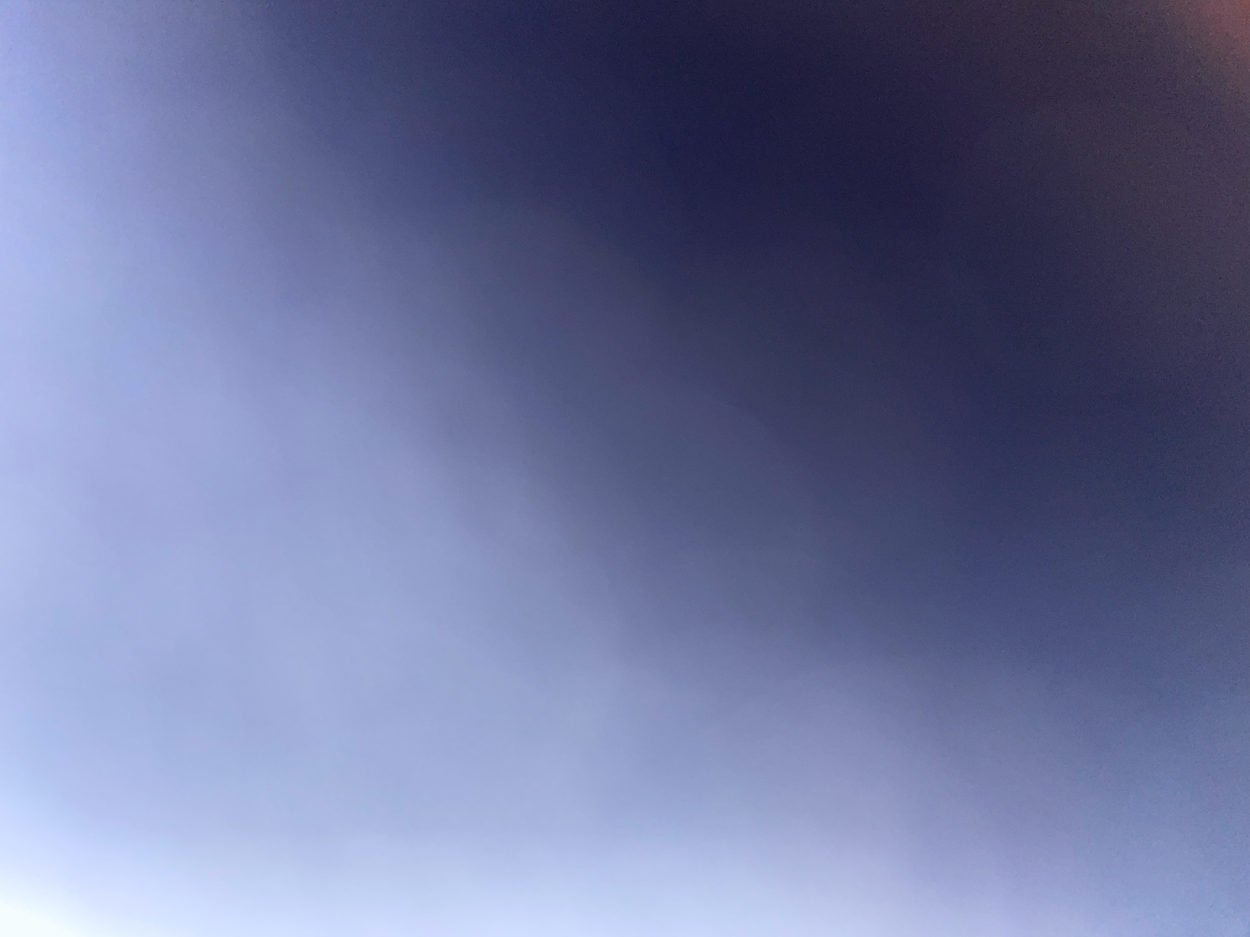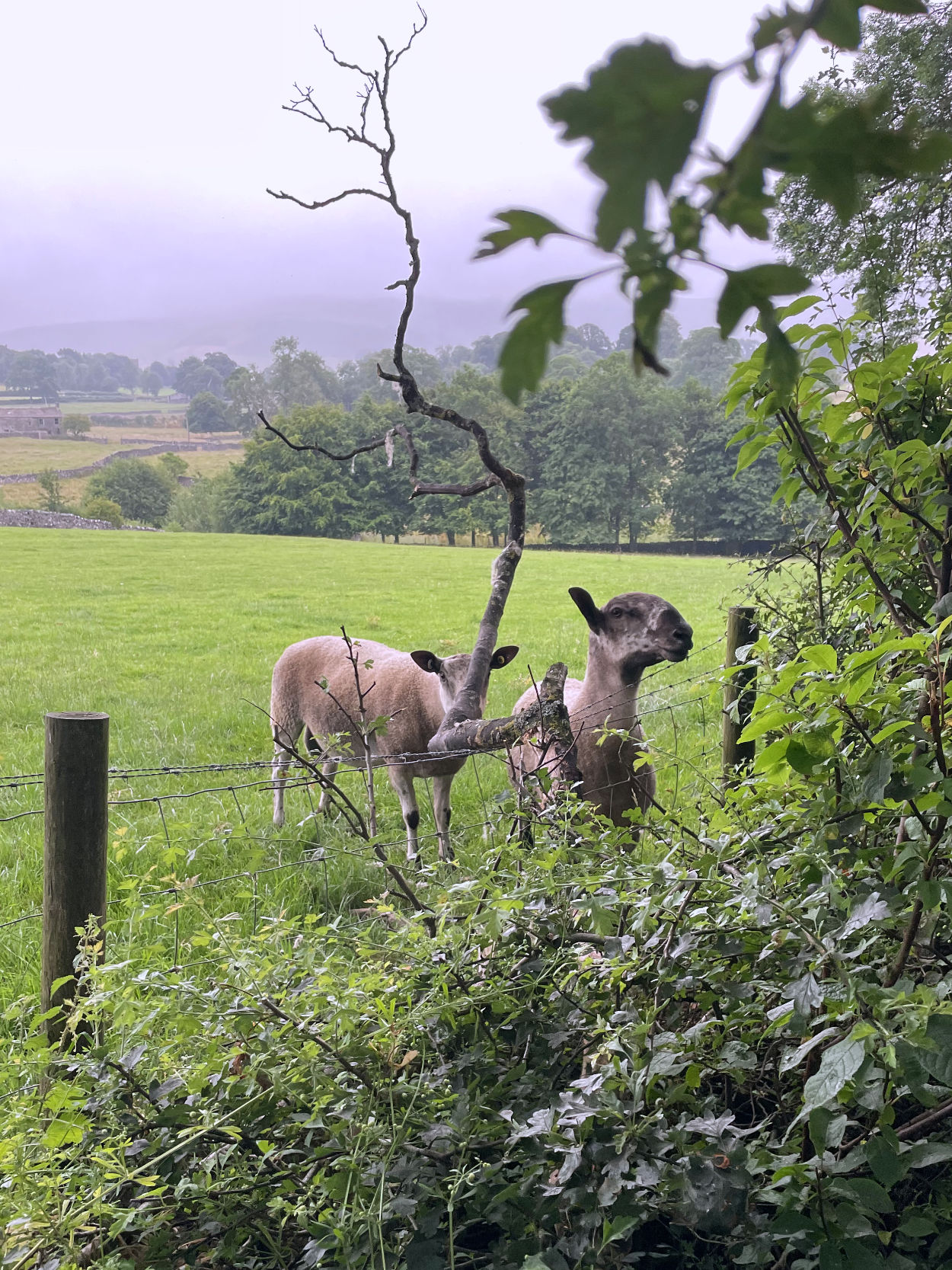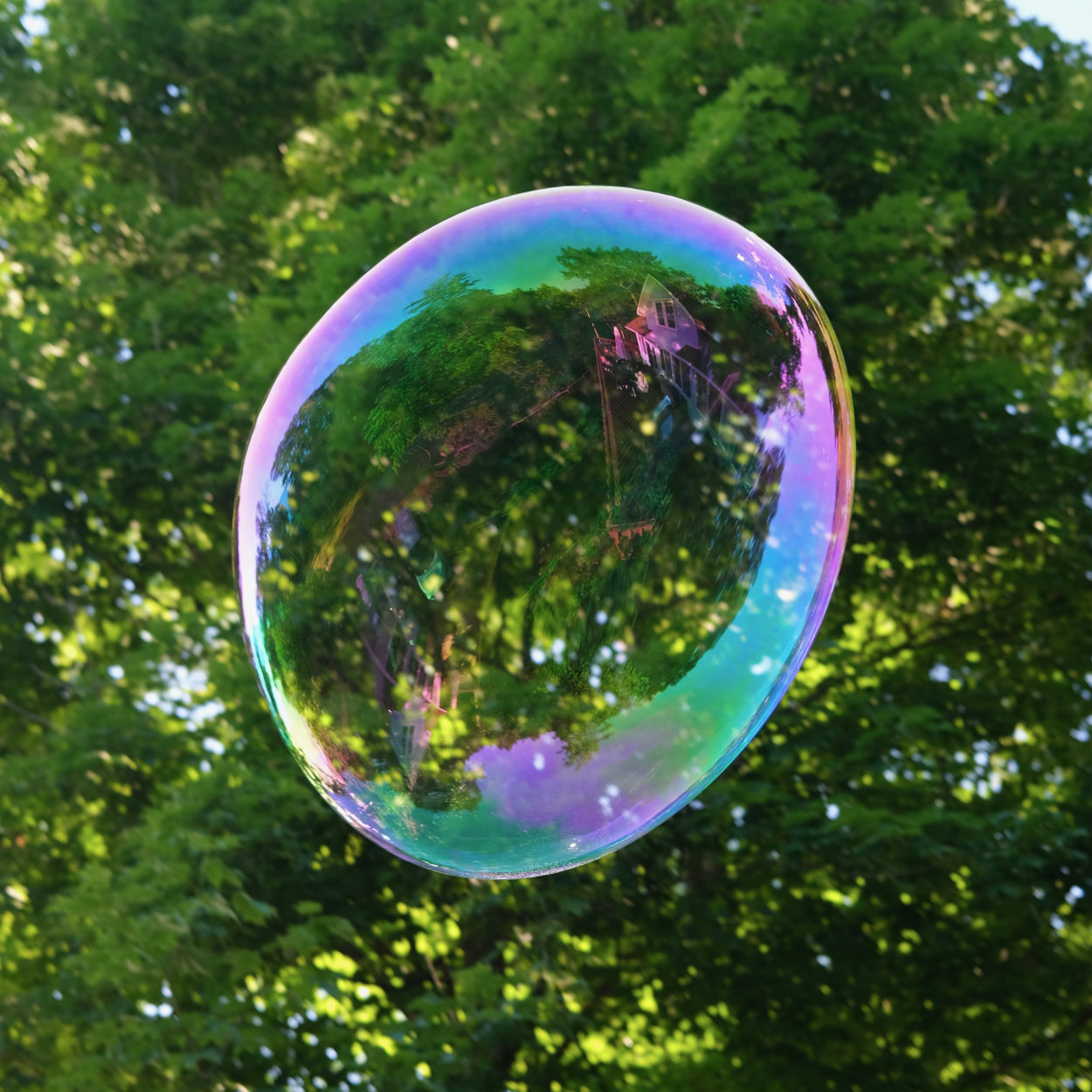Published
Salty skin
Couldn’t care less about going to bed covered in salt as a kid, now I have to wash it off.
B was nuts about the waves.
The day-to-day, things that are neither here nor there. Follow via RSS.
Published
Couldn’t care less about going to bed covered in salt as a kid, now I have to wash it off.
B was nuts about the waves.
Published
Really need to make a habit of reading something that makes me giggle before bed. It sort of sets the day straight.
I’m reading He Used Thought As A Wife, Tim Key’s first lockdown book. It’s perfect. Funny, poignant, captures so many of the absurdities of the first lockdown in the UK. Also the title is perfection, though I didn’t really get it until I got going.
This is the part that made me giggle last night. It’s the middle of a vignette titled “Book Arrangements”, the designer of this book speaking with him about his progress on said book.
JUNIPER: Get anything down today?
KEY: Huh?
Key approaches the SodaStream, strokes its shoulders and smashes a flask up it. Bubbles and a honk. Infinitesimal animated prisms are released into the air, kissing themselves to death and falling to the counter. Key pours the magic into his Simpsons mug.
JUNIPER: Tim?
KEY: I’ve placed my books in order of how many pages they’ve got in them.
Key nods at what he has said.
JUNIPER: You should be writing.
KEY: Well, I did that in the end.
JUNIPER: How does it look?
KEY: Unbalanced, I feel like my lounge is going to tip over.
JUNIPER: Richard E. Grant has his arranged by spine colour.
KEY: Classy.
JUNIPER: So you’ve not made a start then?
KEY: You listen to Five Live enough, you start to believe it’s fine to do fuck all.
JUNIPER: It is Tim.
Ugh, kind of regretting writing that down here because reading back through it, the humor is gone without the context. Leaving it in since it took a few minutes to format.
Just read the book, it’s great.
Published
Life has felt kind of hard recently. Water running through my hands. So many things backed up in my “Blog stuff” folder in Notes, things I didn’t want to forget but wasn’t able to sit down and put in a post. Here’s a bunch so they don’t languish there forever. Oldest to newest.

I want to make a “Uses” page, but not just software/hardware. Skincare, furniture, kitchen tools, etc.
To read: Werner Herzog’s new book, The Twilight World. Or books? I don’t think the other one from lockdown is out yet. See this New Yorker interview. Via RS.
People talk about finding joy in the way your kid looks at the world. I really didn’t understand how moving that could be until recently. Hilarious, pure, and sometimes a little melancholic.
B was being funny about dinner because of a long day, so we just gave him a huge block of cheese to go ham. He couldn’t believe it. Imagine being handed a whole forearm-sized block of the best thing you’ve ever tasted in your short life.
He’d never seen anything like it, and I’ve never seen someone eyes go like that.
Generally more interested in the process than the outcome. In my work and others’. See CBToF (again), also the guy that’s piloting a tiny speedboat around Britain at his own pace. Boat guy via SB.
People in the US seem individualist to a fault.
A generalization, and obviously that individualism has certain upsides as well—don’t get me started on the way that UK schools force you to choose subjects so young—but I see the negative effects every day.
Was talking to DB, she mentioned how in the UK, there is a natural flow to walking. For example, getting between platforms on the tube. In NYC, it’s an absolute free for all.
Woman on the stairs at Broadway and Lafayette, walking up the left hand side of the stairs not holding on to the handrail when the person walking down, their right, clearly needs the handrail. “You see me fuckin comin, right?!” Wild.
[And do not tell me this is just a thing in US cities. I’ve seen it in suburban Tennessee, the middle of Ohio, all over the place. It just comes in different guises. An able-bodied person parking in a handicap spot in a packed Walmart parking lot, believing that Andrew Wakefield’s vaccine bullshit is more important than your children’s friends’ health, asserting that your right to any gun that could possibly exist is more important than reducing the likelihood of serious injury or death during a shooting in our schools and places of worship, etc.]
I think one of my least favorite phrases in the whole entire world has to be “you can’t teach an old dog new tricks”.
It’s a turning away from the world. Announcing that, no, I don’t want to learn anymore thank you very much. No thank you, life is perfect for me as it is, heaven forbid I grow or change. Much better for the world to bend to me.
Gross.
Great article on accessibility: “Writing even more CSS with Accessibility in Mind, Part 2: Respecting user preferences” by Manuel Matzo.
See also: “Accessibility for Vestibular Disorders: How My Temporary Disability Changed My Perspective” by Facundo Corradini.
Came across these while writing a manual accessibility testing guide, an auditing system, etc. for SuperHi.
If things have been calm for a while in life, little stress and so on, I feel like my body can build up stress of its own accord. Is this some sort of innate expectation that if things are going well for a while, surely they must go wrong soon? A sort of fight/flight overture? If so, it kind of makes sense that exercise could help. Literally getting your ya yas out. Don’t know.
Getting properly dressed in the morning, makeup and everything, is such an important part of my day working from home. Don’t know what it is, but I really don’t feel like myself otherwise. I fell out of the cycle once a while back and it actually led to some really low points. It helps if my skin is cooperating.
Related to current events: So one time I had to get a birth control prescription refilled while we were visiting family in the Tennessee. This was in high school (maybe early college?). It was a little more complicated at that point to get a prescription transferred between pharmacies, especially between states, so it had stressed me out but I was able to get it sorted. Anyways, I got the prescription filled and went on my way. It was a very forgettable experience.
Until I got a text from the pharmacist. He used the private contact information in my file to reach out and ask if I was available.
I should have done something about it, but I didn’t know what to do. Thank god I didn’t live there, imagine having to go back.
The shooting in Uvalde happened, and I reflexively went on Twitter. I don’t know what it was about that moment in time, but the instant I started scrolling I felt actual revulsion. It suddenly clicked, how horrible Twitter can make me feel. It didn’t used to be like that. I haven’t really used it since then. I met some great people on it in the past, but that hasn’t happened in a long time. I hope people realize they can always reach out to me here.
Read Notes on maintaining an internal React component library, an article by Gabe Scholz. Via CDM.
Watch How I Code and Use a Computer at 1,000 WPM!! by blind coder Sina Bahram. See also Coyote, “a project developed by cultural heritage professionals and people from the accessibility community to encourage the use of visual description in museum practice”. Very cool. Via RS.
Read about Meno’s Paradox on this University of Washington faculty page. I do not know how to summarize it, only that I have tried to articulate this and have failed every time. Now maybe I can just refer to Meno’s Paradox, or at least to this page. Via CDM.
Read this Guardian article on a neurologist’s tips for fighting memory loss and Alzheimers. “Samuel Johnson said that the art of memory is the art of attention.”
Claire McCardell was incredible. She popularized separates for women! Capsule wardrobes! In like, the 30s!! This is a great article about her contribution to fashion: Claire McCardell originated The American Look (part 1)
Explore philosopher.life. Via LS.
To read: Social Warming: How Social Media Polarises Us All by Charles Arthur. Or not. It sounds worthy, but depressing.
Dig further in to Roni Horn’s work. Specifically, “Still Water (The River Thames, for Example)”. Via BL.
There is no reason to be anything but nice to strangers. It makes you both feel good. Being a dick to someone makes you both feel bad.
Yep, exactly. Well said, and happy birthday, Chris Coyier!
Thanks to B for the photo ❤️
Published

We finally took B to the UK for the first time after two forcibly cancelled visits. Just got back on Wednesday night quite late. We had plans pretty much every day we were there, which was pretty nuts, but we got to catch up with so many people.
There were a lot of firsts: B’s first birthday, B’s first steps, B’s first time meeting his cousins and so much other family, B’s first time on the moor, B’s first time in a carrier backpack, our first night away from B (a fancy dinner + hotel in the dales, we’ve never done something like that before), our second night away from B (we got to have a party! with lots of friends!), B’s first cake (and second and third… there was a lot of cake). B’s first time in over 90-degree weather. Would have expected that to be in Brooklyn, not the north of England…
And of course, B’s first transatlantic flights. All things considered, he did really, really well. He doesn’t like three-hour customs lines, but frankly, who does.
Published
Improvised Life is a blog maintained by Sally Schneider. Sam introduced me to it recently (specifically, to her post on tailoring clothes quickly with extra buttons and magnets), and I was delighted to realize that she actually wrote my favorite cookbook as well, The Improvisational Cook.
Published
Anyhow it seems a pity to have a built-in rite of passage and to dodge it, evade it, and pretend nothing has changed. That is to dodge and evade one’s womanhood, to pretend one’s like a man. Men, once initiated, never get the second chance. They never change again. That’s their loss, not ours. Why borrow poverty?
Ursula K. Le Guin on the menopause, from her essay “The Space Crone” in Dancing at the Edge of the World
This essay has maybe my favorite final line I’ve ever read.
“Into the space ship, Granny.”
Published
So the SCOTUS struck down Roe v. Wade recently. Abortion rights are now up to the states. This is inhumane, in my opinion.
I have a lot more to say on it but lack both the time and the clarity of mind to articulate the injustice. In lieu of that, I wanted to record this post on LinkedIn, shared with me by Sam. I don’t love LinkedIn generally, but I think it is a hell of a brave place to share an abortion story.
Unfortunately, after an agonizing wait, both my blood tests and CVS (large needle to sample the placenta for abnormalities) confirmed a devastating chromosomal issue. If you have a strong constitution, feel free to look up Trisomy13 on Wikipedia. Median survival after birth is 12.5 days, and the prognosis is pretty awful beyond that. Neither my OB nor genetic counselor had ever had a patient continue with such a pregnancy, so I scheduled my termination.
There’s an important call out here. My life was NOT in danger. I simply cannot fathom being forced to have continued with this pregnancy, knowing all along that I would have to give birth to a child that would die. I would never judge someone else who chose that path, but the mental toll on me and my family – and the thought of suffering for the baby – it didn’t even register as a choice for me.
This is one person’s abortion story.
According to the report “Seeing the Unseen: The case for action in the neglected crisis of unintended pregnancy” by the United Nations Population Fund published this year, it is likely that nearly half of of all pregnancies worldwide are unintended.
Her story is one among billions.
Related point: There is nothing in the Constitution preventing discrimination on the basis of one’s sex. The Equal Rights Amendment would fix this. It has already been ratified by 38 states and passed by both the House and the Senate. One of the only things holding it back is a minor clause in the introduction that it should have been passed within seven years. In my opinion, and in many others’, major legislation like this should take a long time. Seven years is a ridiculous limitation.
If you live in the US, write to your senators now and urge them to dissolve the time limit for the ratification of the Equal Rights Amendment. The House already did it in March of last year.
You can learn more about the Equal Rights Amendment on eracoalition.org.
Visit senate.gov to easily find your senators’ contact information.
Published
Both Hokusai and Jack Butler Yeats hit their artistic strides in their 70s, their output just exploded at that point in their lives. How many other artists did the same? I can’t think of others, but surely many. Let me know.
Came across Yeats via this RHLSTP episode with Dara Ó Briain. Already knew about Hokusai but had no idea about the period of his life where he was most prolific, learned about that via this Great Art Explained episode.
Yes, almost immediately after posting this, Brian shared the book “On Late Style: Music and Literature Against the Grain” by Edward W. Said. Another one for the reading list!
Published
I’ve had a post languishing for years in my drafts folder, return to it every once in a while but never feel like it’s quite right. For one thing it feels way too long. It’s about cynicism, about how I feel like it’s one of the most toxic, pervasive things both on a very personal level and also when you look at society as a whole. When I re-read it, it feels too preachy, or starry-eyed, or whatever.
Anyway, Nick Cave replied to a fan back in April this year about this very topic. He said it all way, way better than I ever could.
Read Issue #190 of The Red Hand Files
A quote from his letter:
Unlike cynicism, hopefulness is hard-earned, makes demands upon us, and can often feel like the most indefensible and lonely place on Earth. Hopefulness is not a neutral position either. It is adversarial. It is the warrior emotion that can lay waste to cynicism.
Accompanying his letter is a photo of an artwork by Philip Guston. Guston was a self-taught Canadian American representational painter. He often explored dark themes in his work, including himself and his own mental health issues, using primarily a limited monochrome and pinky-red palette in his later work. A lot of his paintings are almost cartoon-like except for the very rough linework. Klansmen feature heavily in some of his most famous paintings. He deemed these self-portraits. They aren’t explicitly violent per se, but they are menacing. They depict the banality of evil, how it lurks inside.
The figure in the piece that Nick Cave chose has a hood, but it has no pointed peak. They have a slightly pained expression (hard to figure out how Guston achieved that with such minimal brushwork) and are criss-crossed with dotted lines through their head and torso as if they have been sewn back together over and over. There is vivid red smeared on the hood, a head wound.
It’s a good image choice.
I can’t figure out where it is from, reverse image search turns up nothing. Maybe it’s a detail. I’ll keep searching.
Published

We took B to the cottage for the first time. The weather was a bit grey and cool, but it turns out we were lucky. A huge storm ripped through right after we left which took down a tree and made it impossible to reach, also knocked out the power for two days. Followed by temps in the 90s, and B hates heat like that. So it worked out!
Lots of sitting on Great-Grandpa’s bench swing, massive bubbles, sunsets, good food, playing with balls bigger than he is. And we got two afternoons at the beach on the lake. Turns out he absolutely loves cold water. He would crawl up to it, be shocked by a small wave, and then hastily crawl away laughing his head off. And repeat, for 30 minutes. The only things that would distract him was trying to eat pebbles, and shoveling sand into his mouth.